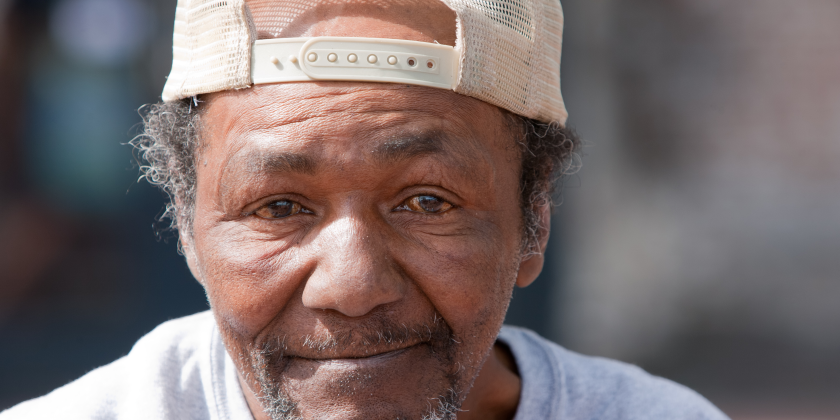Diabetes1 is a disease in which blood glucose levels are above normal. Most of the food we eat is turned into glucose, or sugar, for our bodies to use for energy. The pancreas, an organ that lies near the stomach, makes a hormone called insulin to help glucose get into the cells of our bodies. When you have diabetes, your body either doesn’t make enough insulin or can’t use its own insulin as well as it should. This causes sugar to build up in your blood.
Diabetes can cause serious health complications including heart disease, blindness, kidney failure, and lower-extremity amputations. Diabetes is the seventh leading cause of death in the United States. The age-adjusted rates of diagnosed diabetes2 per 100 for black males increased 136% (from 3.9 to 9.2) from 1980 to 2014. For black females, the age-adjusted rates per 100 changed little from 1980 to 1997 and then increased 30% (from 7.6 to 9.9) from 1997 to 2014. Jay Harold has an informative post on diabetes. Click here to learn more
Jay Harold used information from the Centers for Disease Control and Prevention (CDC) to provide an overview of diabetes management3 during summer months.
How to keep your cool during the hottest time of year.
Did you know that people who have diabetes—both type 1 and type 2—feel the heat more than individuals who don’t have diabetes? Some reasons why:
- Certain diabetes complications, such as damage to blood vessels and nerves, can affect your sweat glands so your body can’t cool as effectively. That can lead to heat exhaustion and heat stroke, which is a medical emergency.
- People with diabetes get dehydrated (lose too much water from their bodies) more quickly. Not drinking enough liquids can raise blood sugar, and high blood sugar can make you urinate more, causing dehydration. Some commonly used medicines like diuretics (“water pills” to treat high blood pressure) can dehydrate you, too.
- High temperatures can change how your body uses insulin. You may need to test your blood sugar more often and adjust your insulin dose and what you eat and drink.
Your Summer Checklist
- Drink plenty of water.
- Test your blood sugar often.
- Keep medicines, supplies, and equipment out of the heat.
- Stay inside in air-conditioning when it’s hottest.
- Wear loose, light clothing.
- Get medical attention for heat-related illness.
- Make a plan in case you lose power.
- Have a go-bag ready for emergencies.
It’s the Heat and the Humidity
Even when it doesn’t seem very hot outside, the combination of heat and humidity (moisture in the air) can be dangerous. When sweat evaporates (dries) on your skin, it removes heat and cools you. It’s harder to stay cool in high humidity because sweat can’t evaporate as well.
Whether you’re working out or just hanging out, it’s a good idea to check the heat index—a measurement that combines temperature and humidity. Take steps to stay cool (see sidebar) when it reaches 80°F in the shade with 40% humidity or above. Important to know: The heat index can be up to 15°F higher in full sunlight, so stick to the shade when the weather warms up.
Physical activity is key to managing diabetes, but don’t get active outdoors during the hottest part of the day or when the heat index is high. Get out early in the morning or in the evening when
temperatures are lower or go to an air-conditioned mall or gym to get active.
Your Blood Sugar Knows Best
Kids out of school, vacations, get-togethers, family reunions. The summer season can throw off your routine, and possibly your diabetes management plan. Check your blood sugar more often to make sure it’s in your target range no matter what the summer brings. It’s especially important to recognize what low blood sugar feels like and treat it as soon as possible.
Warm-weather wisdom:
- Drink plenty of water—even if you’re not thirsty—so you don’t get dehydrated.
- Avoid alcohol and drinks with caffeine, like coffee and energy or sports drinks. They can lead to water loss and spike your blood sugar levels.
- Check your blood sugar before, during, and after you’re active. You may need to change how much insulin you use. Ask your doctor if you would like help in adjusting your dosage.
- Wear loose-fitting, lightweight, light-colored clothing.
- Wear sunscreen and a hat when you’re outside. Sunburn can raise your blood sugar levels.
- Don’t go barefoot, even on the beach or at the pool.
- Use your air conditioner or go to an air-conditioned building or mall to stay cool. In the very high heat, a room fan won’t cool you enough.
Too Hot to Handle
Know what else feels the heat? Diabetes medicines], supplies, and equipment:
- Don’t store insulin or oral diabetes medication in direct sunlight or a hot car. Check package information about how high temperatures can
affect insulin and other medicines.
- If you’re traveling, keep insulin and other medicines in a cooler. Don’t put insulin directly on ice or on a gel pack.
- Heat can damage your blood sugar monitor, insulin pump, and other diabetes equipment. Don’t leave them in a hot car, by a pool, in direct sunlight, or on the beach. The same goes for supplies such as test strips.
But don’t let the summer heat stop you from taking your diabetes medicine and supplies with you when you’re out and about. You’ll need to be able to test your blood sugar and take steps if it’s too high or too low. Just make sure to protect your diabetes gear from the heat.
Stormy Weather
June 1 marked the beginning of hurricane season. Severe thunderstorms with hail, high winds, and tornadoes are more likely in warm weather, too. People with diabetes face extra challenges if a strong storm knocks out the power or they have to seek shelter away from home. Plan how you’ll handle medicine that needs refrigeration, such as insulin. And be prepared by packing an emergency go-bag—a supply kit you can grab quickly if you need to leave your home.
Here’s to staying cool, staying safe, and enjoying the long summer days!
Click this link to get free Health and Wealth information to improve your life. Play the free “Slow Roll Through Civil Rights” Game found on the Jay Harold website. Enjoyed this post? Share it and read more here. Questions? “Ask the Pharmacist a Question!”






